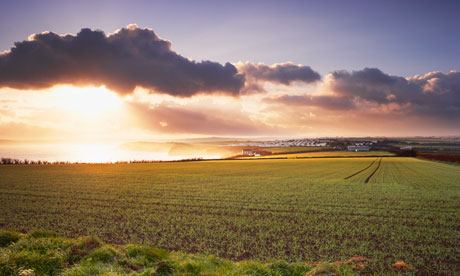Energy and World Change (Past, Present and Future)
Brief summary:
The days of fossil fuel are numbered. Renewable energy will drive the green revolution. – Gurinder Shahi
There is an increasing need for new ways to produce energy, as fossil fuels are not only pollutive, but also limited in number. We’ve exceeded more than half of all available oil, and it is estimated to last us about 40 to 50 years. Even though we had an unprecedented decrease in energy consumption last year, this was primarily due to the world economic recession. There’s a theory that 2008 was Peak Oil.
Interesting fact of the day: China is investing the most in clean energy in the whole world! Surprise, surprise. This is probably driven by necessity, due to their rapid modernization and rising middle class.
We also watched a number of videos today on energy sustainability and where it is in the world today. How do we get there? It seems that political will is of ultimate importance, as they have the financial muscle to influence R & D processes, without which, innovation for sustainable energy would not be possible. Private entities are less likely to want to invest in this as energy companies are already comfortable with the high revenues they get, and there is not much need for innovation as energy is a necessity with high price-inelastic demand. However, it is interesting to note that the increase in oil prices pushed the green revolution – as companies were seeking more affordable, long-term alternatives. This highlights how humans are short-term and innovations are needs-driven.
Interesting observations & ideas:
1. Singapore is 100% dependent on other countries for energy. Energy Security is a concern of every country and governments have to ensure that there is sufficient energy for economic growth and development.
2. Energy as a source of national income. This is a smart way of killing two birds with one stone – achieving both energy security and economic growth at the same time.
3. Using cash to incentivize people to go into solar energy. Imagine if Singapore were to adopt it.
4. WW.Energy grid. If we can have a world wide web, can’t we have a world wide energy grid? Aim: to create a win-win situation among those who want it and those who supply it. The energy grid would indicate demand and suppliers can then address that demand.
5. The innovation deficit in the Energy Industry.
Issues for further discussion:
Energy Grid. How would this work?
Here’s an example of a Energy Grid company, EnergyGrid Networks, A Smart Grid Solutions Company.
“We partner with Utilities to transform legacy electric grids and infrastructures to create a next generation of Utility applications and Smart Grid network solutions. By leveraging our technical and operating expertise, EnergyGrid Networks provides a global platform for new services, allowing Utilities to cost effectively and reliably communicate with their customers to improve service, lower operating costs, and better manage energy supply and demand."
Such an energy grid seems especially feasible in this age where many parts of the world are densely linked up by infocommunication technologies, which serve as platforms for such utility applications to work. Perhaps the emerging technology of cloud computing could also be integrated with energy grids.
However, in implementing such an initiative, there are some issues I foresee that need to be addressed. If there is to be a consolidated, single grid to be formed, this requires collaboration among all the energy conglomerates of the world, and the main companies in each country. Given companies’ differing business perspectives and profit motives, there is a need for an authority for decision making. Should the governments be in charge or should a private committee be set up? For such a good that is necessary for survival, there should definitely be an element of governmental regulation to prevent exploitation.
Key takeaways:
1. The drive towards energy sustainability will only be successful if the goals of government, private companies and individuals are met.
2. Aligning of goals boils down to governmental policy toolkits.
3. There is a pressing need to commercialize new energy alternatives, in order to make it attractive to the mass market for significant energy change.
My ratings for this lesson
8/10. The lesson today enriched my knowledge about the green sector and its future, and I found it especially useful for my group’s web report. I also like how some presentations brought out new and interesting technologies, which made me think, “why haven’t we thought of that?!” Indeed, an exciting future for the green industry lies ahead.




